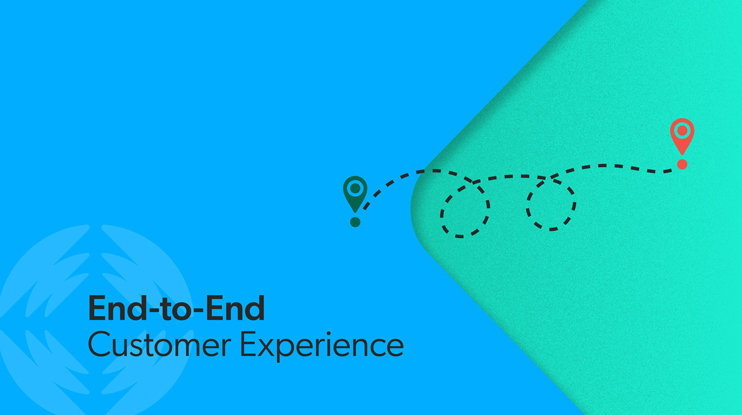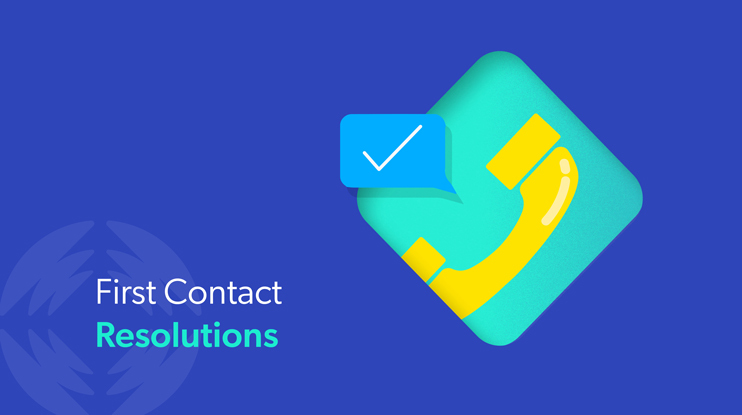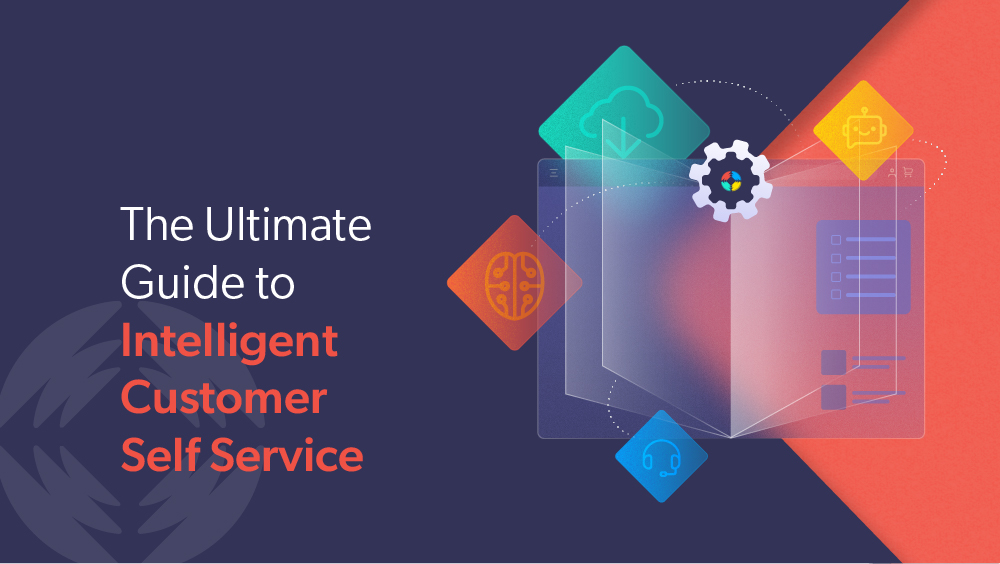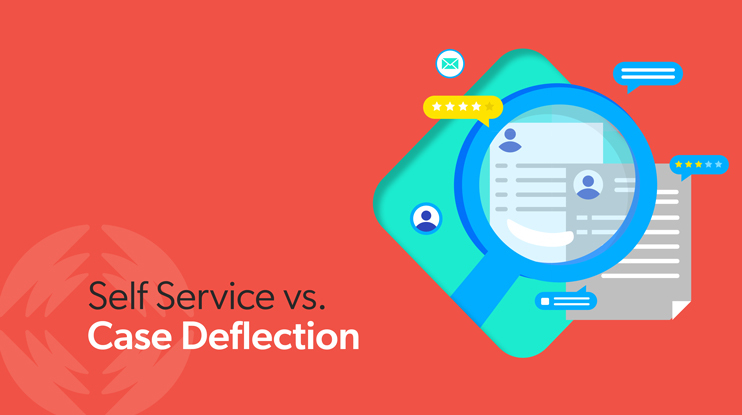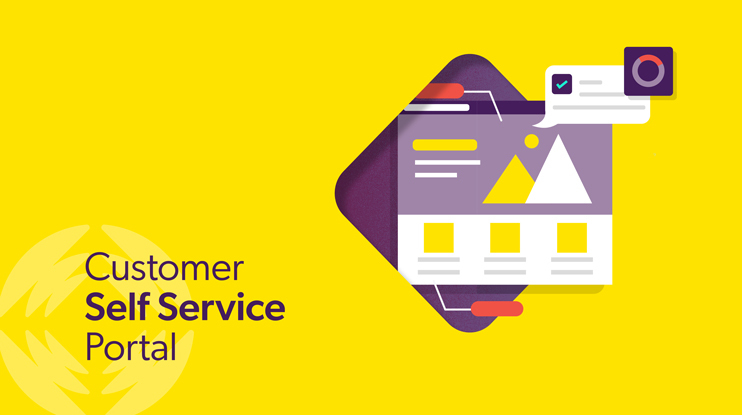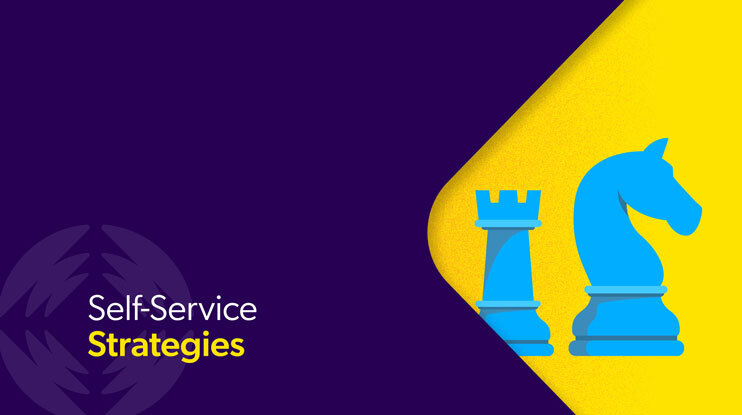Customer experience (CX) executives face several new realities in customer behavior and expectations as well as service delivery and outcomes.
My new book Customer Experience 3.0, 2nd Edition highlights 10 areas of opportunity and risk (from technology to staff empowerment) that are almost never adequately addressed in digital end-to-end customer experience strategies. Each of these can become a competitive edge, enhancing Word of Mouth (WOM) while often reducing costs.
After reviewing these new realities and expectations, I’ll explain why most companies fail to address all of them in their digital customer experience strategy.
How (Most) Customers Behave
Problems are at record levels — customers are frustrated with technology, housing issues, prices and shrinking package size. Macroeconomic trends bleed over into how customers perceive and interact with brands.
Thirty to ninety percent of customers still don’t complain due to hassle or cynicism that action will be taken. And with numerous channels available, those that do complain are doing so in many different directions. This dilutes what companies hear, especially since two-thirds of those with Consumer Packaged Goods (CPG) issues often go to the retail channel where they purchased the product or service, or generally complain on social media.
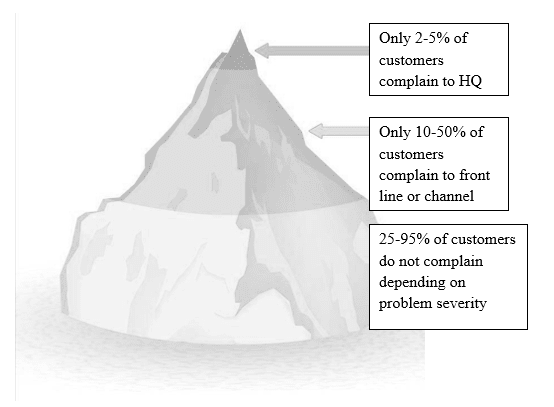
At least half of consumers who complain about their most serious problem use a digital channel, while a third use the telephone. For CPG issues, more than three-fourths (85%) use digital while only 15% use the telephone.
Bottom line, digital has far surpassed the telephone.
And customer delight can easily be created digitally — here’s how.
How Do You Build Customer Delight Digitally?
Designing the customer journey from the customer’s perspective is undoubtedly important. But doing so in a vacuum can miss critical steps in designing your delivery of a great customer experience. This is because you may want to add steps customers aren’t expecting, as well as a continuous improvement process.
A better way of conceptualizing the delivery of a great journey is designing within the following four-part formula for achieving a great experience:
- Doing the right job, right, the first time
- Create a strategy for easy access to service and support
- Deliver effective, ideally proactive, customer support
- Leverage feedback and Voice of the Customer (VOC)
10 Steps to Improving Your End-to-End Digital Customer Experience
Phase 1: Doing it right the first time
This phase covers product production and sale, including articulation of benefits, anticipating customer needs, comparison to competitors, and onboarding. Most companies define quality as delivering products according to spec. But customers don’t often read and make many assumptions, leading to predictable yet preventable disappointment.
In this phase, most companies fail at two critical steps of customer experience strategy: Transparency and Onboarding.
1. Transparency and honesty
Transparency and honesty allows the customer to anticipate problems they are likely to encounter, creating high levels of trust. The National Delight Study found that 41% of customers delighted by transparency and honesty would pay more for the product.
At Ryder Logistics, sales reps might say, “Lease our trucks and your uptime will be stellar.” (Which is true.)
BUT, the GVP of Sales then adds, “But let’s also talk about what happens when a truck breaks down.” Acknowledging such occurrences makes the sales pitch more credible and mitigates unexpected surprises.
2. Customer education and onboarding
Customer education and onboarding is needed in just about every product. Unfortunately, there are actually three steps to conducting customer education, and most companies skip the first two.
For more complex products, your first step is to assess your customer’s skills and communication preferences. Further, ask your customer how they intend to use the product to assure the training meets customer expectations. This characterization is part of the first step of defining the customer persona.
One tech company humorously asked customers how tech-savvy they were (“Are you a techno-geek? Know just enough to be dangerous, or are you a music major?”), and had three different ways of delivering a personalized education depending upon technical sophistication. This is a great example of how customer insights can be used to deliver a better customer experience.
The second step of onboarding focuses on motivation. Our National Customer Rage study found that women read the directions twice as much as men (I am very guilty of this). It is critical to create a desire to be educated, which can be done via scaring, bribing, or challenging the customer.
A credit union motivated customers to watch a four-minute video on obtaining a mortgage by offering a one-fourth point mortgage discount. Those who watched the video made fewer mistakes, thereby reducing service costs and dissatisfaction while building trust.
Another example is that of an insurance company welcome letter, which gently scares readers by saying, “We know you don’t like surprises; here are three things customers often miss in their policies.”
Only then, as the third step, should you move into direct customer education.
After establishing a basic education with your customer, you then have the foundation to enable self-service, an advanced use of functionality, and evaluating the effectiveness of the onboarding process. This last step is also often skipped — and we’ll get more into it below.
AI can very effectively assist in two areas of education, (1) drawing on available content sources to curate information for that person and (2) crafting the clear, tailored, humorous language to engage the customer with education.
Phase 2: Access to help — and encouragement to engage
Access to help is more than being available via all channels at all times. (And while we shouldn’t confuse this accessibility with website accessibility, you might remember to provide help using voice, braille keyboards, etc.) Because a majority of customers do not complain and many who do go to someone not protecting your brand, you must highlight your channels and encourage their use.
Most customers won’t ask for assistance, so you need to place the message to motivate them to ask for help in front of them exactly when they encounter the problem or question. ‘In front of’ might include voice or braille notifications as well.
3. Aggressive complaint and question solicitation
Non-complainants are much less loyal but many companies are afraid to solicit complaints because of fear of bad news and the existence of a blame mentality.
The message, “we can only solve problems we know about,” must be in front of the customer exactly when a problem is encountered. Dyson actually prints the 800 number on the handle of the vacuum so that consumers see it and call rather than going back to the retailer.
4. Simplify the front end
The top cause of customer rage is having to listen to long messages. I realize your compliance or legal department says those long messages must be there, but:
- Keep them as short as possible and never repeat them across multiple stages. Push back on legal and distill as much as possible.
- Don’t ask open-ended voice recognition questions like, “How can I help?” without giving examples. Even in predictable situations, such broad questions cause at least 20% dissatisfaction due to placing a burden on the customer.
- Allow easy access to a human – this was the second most prevalent cause of customer rage.
Phase 3: Contact handling and service
Should customer service and contact handling be proactive or reactive? Being proactive is one-third the cost — and often creates a positive customer experience. Reactive service should be very flexible depending on the customers’ needs. One answer does NOT fit all for complex issues
5. Use AI to determine if proactive or reactive response is best
AI can look at a set of facts and decide when there is enough information available to proactively reach out to a customer – which often causes delight while reducing cost by two-thirds.
Where is a proactive approach most cost-effective? To become proactive in a systematic manner, the company must know where the customer is on the journey and flag transaction failures, even before they become evident to the customer. For example, FedEx can identify when a container missed a flight and notify customers the day before that the package is going to be late. To have a human sort through all those transactions would be cost prohibitive.
Likewise, Harley Davidson (HD) emails customers in Northern states and warns them that if their bike is stored outside all winter, the battery will be dead when they want to ride on the first nice day in March. Further, HD suggests in the email that the customer can buy a charger on the website and charge the battery indoors in February so she will be ready to go in March. This proactive approach avoids problems, plus generates extra revenue from charger sales.
Further, few customers are put off by a confirmation. However, don’t be like my medical provider and send four confirmations when I already responded to the first.
6. Use AI to support customer self-service, education, delight and more
Customers increasingly wish to resolve known issues themselves via do-it-yourself routes, also more commonly called digital customer self-service. Gartner has found that 80% of self-service interactions begin online, and touch multiple channels.
You can capitalize on this by exposing succinct support articles and other publicly-consumable content via different search hubs, such as your self-service portal, customer community, partner community, and much more. When buttressed by artificial intelligence, customer effort to find answers falls and satisfaction grows.
Plus, additional AI features help self-service go far beyond simple broke/fix resolution; recommendations help educate customers on features or services they may previously have not been aware of.
Data from these searches and interactions can also be extended into your contact center, giving agents a step up on problem-solving. Such analytics can also inform research and development, product design, and business strategy.
7. Create flexibility
Especially flexibility that can be built into both human and digital responses. For each of the prevalent top five complex issues faced by human service staff, create a flexible solution space (FSS) that specifies the key parameters that may differ case to case.
At Nissan, CSRs have delegated authority by District Service Managers to be flexible on how much goodwill they could spend on out-of-warranty repairs for good customers.
Navigant Credit Union empowered tellers to decide when they would accept third-party checks (a major risk) based on their knowledge of the member. While Compliance objected, in a pilot test at three branches, losses actually declined.
The system should provide FSSs to the front line for at least the top five frequent but difficult issues. Our experiments have shown that when the staff has clear FSSs for top issues, they can then apply common sense and experience to address the next 20 most complex, challenging issues without supervisor intervention or approval.
The FSSs provide benchmarks from which staff can interpolate or extrapolate for low risk success while being extremely responsive and efficient. Staff morale rises as they are successful and self-reliant.
Cautions in using AI:
- Leverage AI conservatively
- Use only data you have developed
- Measure outcomes 100% of the time
- Use outcomes to continuously improve
8. Make delight intentional
Identify opportunities to create cheap delight and foster lots of positive word of mouth. The same verbiage can often be used in both human and digital exchanges. For example, either a chatbot or a human can say, “I’d love to help you with that!” or “I’m the superhero of lost shipments – let’s get started finding yours!” and create customer delight.
Slack also provides a great example in their update section, saying nothing beyond “take care of yourself and treat yourself kindly.” Just that comment created 567 comments, most of which appreciated the humanity of Slack. However, there were some complaints that the advice was “trite and lazy.”
Lesson: Delight will be a hit 97% of the time, but offend 3%. I think it is still worth doing.
Phase 4: Feedback and Voice of the Customer (VOC)
Most companies have rudimentary VOCs. Only one or two data sources are used — usually complaints and a survey. These data are used to produce a single VOC report sent to all management, often producing very little action and impact. Companies need to rethink the two major aspects of VOC processes:
- Gathering the data, and
- Analyzing/packaging the results to maximize impact.
9. Redefine what data is part of the VOC
Transaction failure data is not directly from the customer, such as missed deliveries or credit card failures leading to rejected purchase, but it absolutely describes the frustrating customer experience. Enhance the range of data collected and improve its actionability. Designers must think more broadly about sources of information (e.g., internal issue tracking systems), to make VOC more compelling. Further, the actionability of surveys can be enhanced by providing the customer with a list of issues they may have encountered rather than just asking if they have had any problems.
We at Customer Care Management & Consulting find you can surface three times as many problems and the granularity makes the data much more actionable. If your invitation highlights action you’ve taken based on customer input in the past, you show the customer that their investment in feedback will create benefit.
For instance, at Chick-fil-A, our survey invitation noted “based on your input, we’ve brought back BBQ sauce.” Response rates increased significantly.
10. Analyzing, Packaging and evaluating the Impact of the VOC
Almost every company insights department makes the same three mistakes:
- They fail to quantify how much revenue is lost by not acting on the VOC.
- To save time and money, they put out one VOC report to everyone that almost no-one reads.
- Less than 5% of insights groups ever report what percentage of items highlighted by the VOC ever get fixed. I believe they are afraid to show how little impact they have.
The first step of maximizing impact is preparing management for bad news. VOC managers should educate management that weaknesses that lose customers are exactly the areas where profits and competitiveness can be enhanced.[6]
Secondly, the analysis should quantify the revenue implication, by issue, to create the economic imperative for action. An analysis that quantifies the payoff of enhancing the whole customer experience (for instance, Net Promoter Scores) really is not actionable because it is not realistic to fix everything. I do have an article entitled, “Net Promoter is like global warming – lots of hand wringing but little action.”
Think in terms of those items that are fixable, and calculate the payoff in each. This brings about much more investment and implementation. I learned at Toyota USA that the best analysis was one that quantified the revenue cost of inaction on a problem for a month. The minute you quantify the cost of inaction (X customers or $Y millions) per month, you precipitate action.
Work with Quality or Performance Improvement in formulating actionable recommendations. When these departments are assisting in the analysis, the company sees twice the impact of VOC in terms of things getting fixed and year-over-year improvement in customer satisfaction.[7]
The final aspect of VOC packaging is tailoring the report to different audiences. Each function should be provided with a separate report and briefing. Chip Horner, former Director of Consumer Services at Colgate Palmolive, said, “You have to look them in the eyes to assure that they understand the opportunity.”
Getting Started
If you are keeping score on how well your company is doing on these ten factors, don’t be too distraught. Very few companies do well in more than half of them. If you need quick wins and management buy-in, I’ve found three of the actions are relatively easy to get started and don’t require major systems investments. The fourth, on AI, is a strategy for getting a quick win without probability of disaster.
These are customer onboarding, giving the front line flexibility and permission to delight, and finally, packaging the VOC data to create a credible economic imperative. Each is described briefly:
- Pick one or two prevalent customer misunderstandings or mistakes and highlight them on your website, quick start guide, and the customer welcome email. Further, if you sell through channels, communicate that education on those two issues will create delight and great customer ratings.
- Identify two areas where the front line needs specific empowerment (blanket empowerment does not work!), on two issues. If management objects, do a pilot test as I described above – you will always be vindicated. Also, encourage the front line to show enthusiasm, take time to educate, arming them with short videos, and show empathy. As noted in the study cited above, we achieved a 4-point top box rating improvement with only a short training session.
- Pick two problems that create significant complaints and dissatisfaction and triple the number of complaints to estimate the number of customers and revenue at risk per month. Most likely, this number will be big enough to get management to invest in a baseline survey of the actual prevalence of the problem and its market damage.
- Use your AI function to sort a stream of incoming communications and flag them as simple and easy, possible to respond to via AI while inserting delight, and those needing to go to a human. Much of this AI-possible middle group, which could be 8% of the total workload, can ultimately be turned over to self-service. However, I’d still survey 100% so you can learn where improvement is still necessary.
See my article on safely using AI – Avoid the Pitfalls of Offshoring and AI
See these articles, How to Get Executives to Support CX Improvements? Appeal to Greed, and Translate Your Customer Journey into Financial Data to Drive Business Results, for guidance on how to assemble the calculations.
Summary
When developing your CX Strategy, you cannot just rely on the customer journey map to indicate what you need to do.
You must build in the tools necessary to support the education, staff flexibility, and feedback channels that are critical to success, even if the customer never asks for them or knows they exist.
Resources:
[1] John Goodman, Customer Experience 3.0, AMACOM, 2014
[2] Customer Care Measurement & Consulting, National Rage Study, 2017, Arlington VA
[3] Survey by Goodman of 250 CEOs attending multiple training sessions hosted by Vistage.
[4] John Goodman, Othmar Mueller von Blumencron, “Making Delight Intentional”, Call Center Pipeline, December 2021
[5] Ibid

